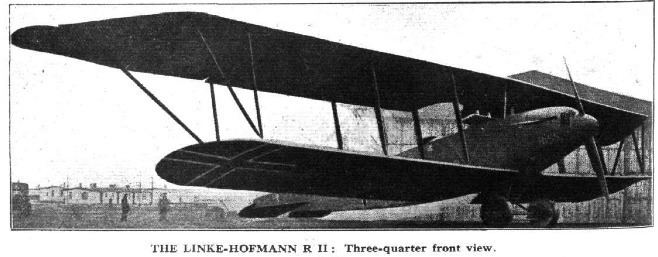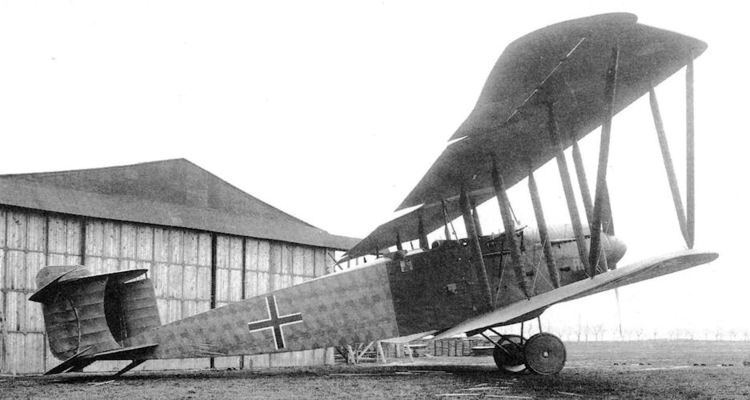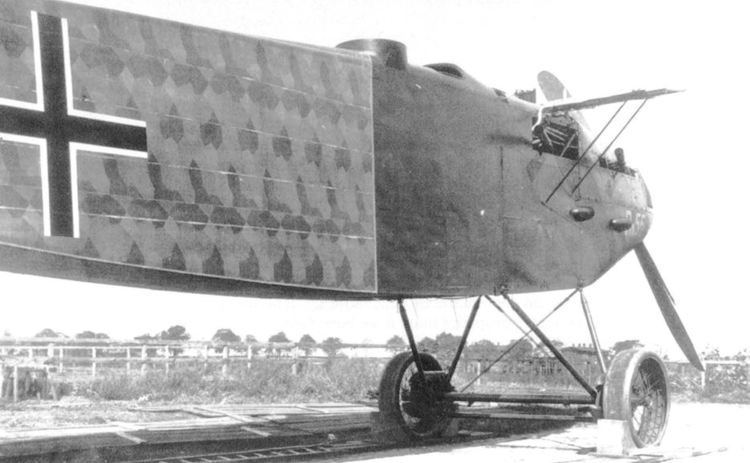Top speed 130 km/h Length 20 m | Wingspan 42 m First flight 1919 | |
 | ||
The Linke-Hofmann R.II (Riesenflugzeug – "giant aircraft") was a bomber aircraft designed and built in Germany from 1917.
Contents
Design and development

The Linke-Hofmann R.I had disappointing performance and handling, as well as structural weakness with both prototypes crashing. Linke-Hofmann took a radically different approach for their second Riesenflugzeug, the Linke-Hofmann R.II. The R.II was an approximately three-fold scale-up of a conventional single-engined biplane, powered by a quartet of Mercedes D.IVa inline-six engines turning a single 6.90 meter (22 ft 7.5 in) diameter tractor propeller, the largest single propeller ever used to propel any aircraft in aviation history. The quartet of Mercedes powerplants were arranged in pairs in the central fuselage and drove the propeller through clutches, shafts and gearboxes. The Linke-Hofmann R.II, probably the largest single propeller driven aircraft that will ever be built, had a wing span of 41.16 m (135 ft 0 in), length of 23.3 m (76 ft 5 in) and height of 7.1 m (23 ft 4 in).

The airframe was constructed largely of wood, with plywood covering the forward fuselage and a steel-tube v-strut chassis main undercarriage with two wheels and a tail-skid at the aft end of the fuselage. Two examples of the R.II had been completed by the time the Armistice bore the IdFlieg German military registration numbers R.55/17 and R.58/17.

Flight testing of R 55/17 was carried out after the Armistice in 1919, demonstrating acceptable performance and handling, being able to fly happily with only two engines driving the enormous propeller. Normal endurance was estimated to be 7 hours, but with adjustment of load and a cruising speed of 74 mph (119 km/h) it was estimated that the R.II could stay aloft for 30 hours.

There were plans to make it a 12-passenger airliner after the war, but the restrictions of the Versailles Treaty ended further development.
Specifications (Linke-Hofmann R.II)
Data from German Aircraft of the First World War
General characteristics

Performance
Armament

